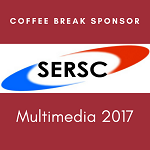
Biography
Biography: Arata Kawamura
Abstract
Sound spectrogram is useful to visually analyze time-varying characteristics of a sound. Since the sound spectrogram can be treated as an image, we can process the sound spectrogram by using image processing techniques. Such interesting techniques have been applied in music transcription, musical instruments sound separation, noise reduction and so on. Conversely, we can produce a sound signal from an image which is treated as a sound spectrogram. This technique is called as image to sound mapping. In the image to sound mapping, the most important parameters are spectral phase, playback time and frequency bandwidth. The spectral phase decides sound type or tone color. The playback time is the time for providing the single image, and frequency bandwidth decides each pitch of sinusoid to make the sound. Since the main purpose of the mapping sound is to bear the image as a sound, we should carefully make the mapping sound under a common condition with respect to these parameters. Addition to it, we should have some knowledge of a filtering effect for the mapping sound, because the sound is received at sensors after passing through a certain transfer function from a loudspeaker to the sensors. I focus on filtering or modifying a mapping sound from an image, and investigate its image-reconstruction capability. Firstly, we review image to sound mapping techniques. Secondly, for a mapping sound, we apply three basic operations of the signal processing, i.e., multiplication, delay, and addition. Thirdly, we discuss the basic filtering effects obtained from low-pass filters, high-pass filters, and band-pass filters. These processing results are intuitively acceptable. Then, we also investigate FIR and IIR echo effects. After that, some modulation effects such as amplitude modulation are discussed. Finally, on a sound to image mapping method, useful drawing techniques are presented.

